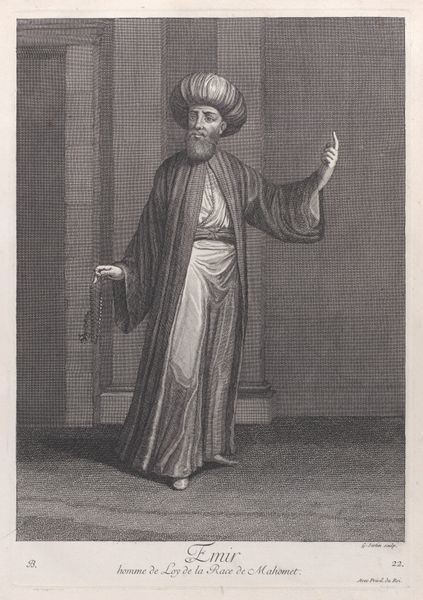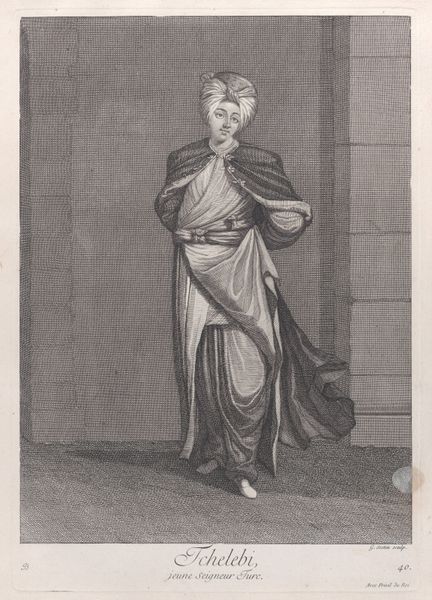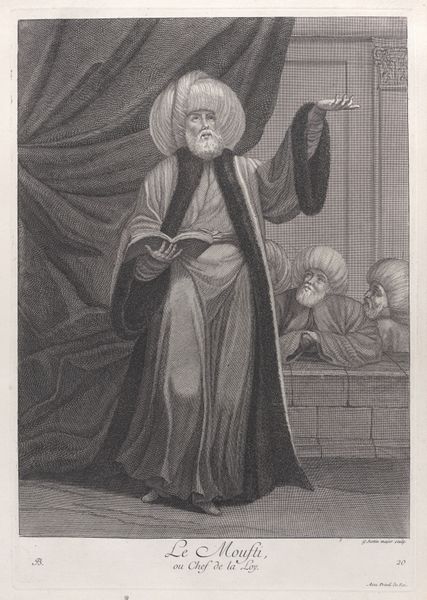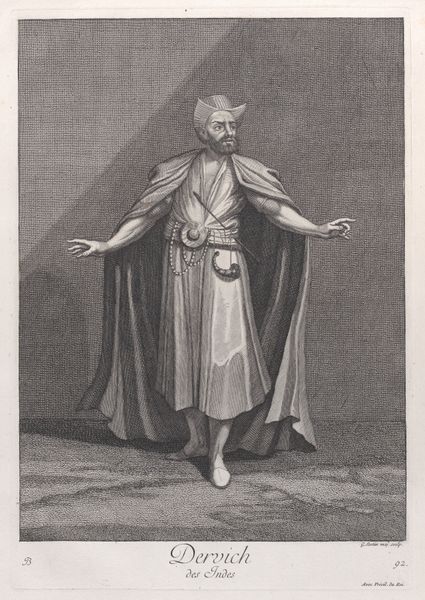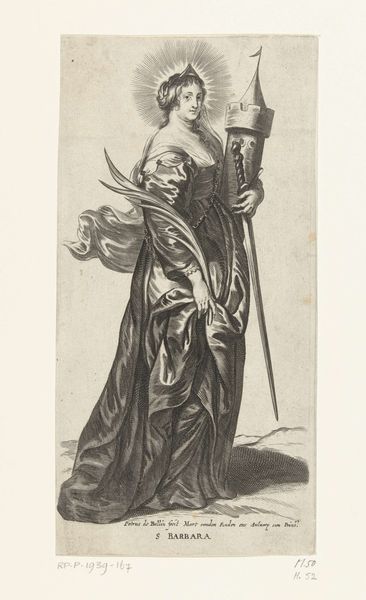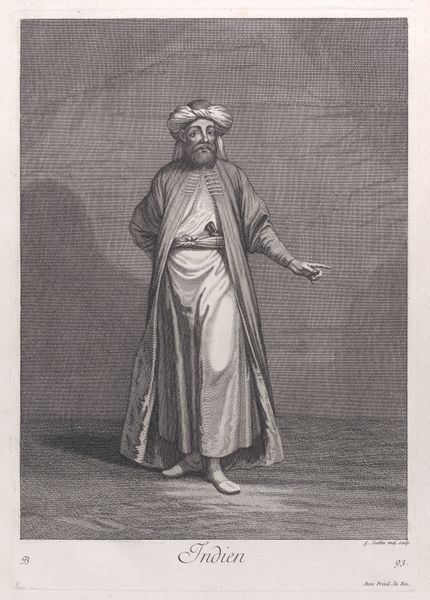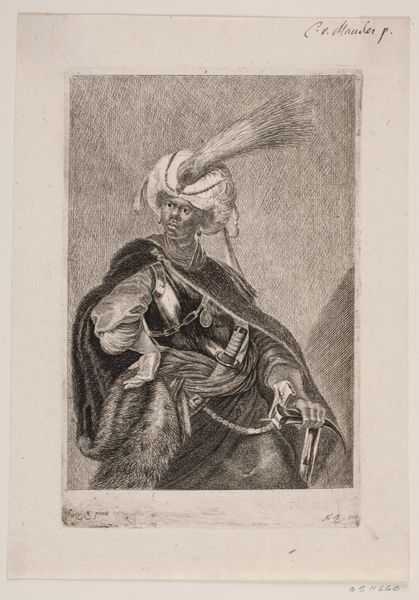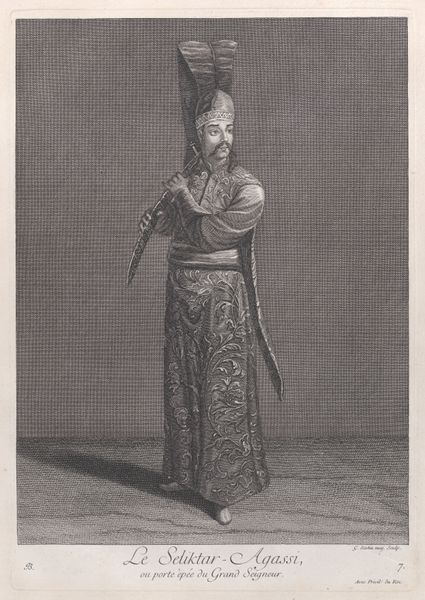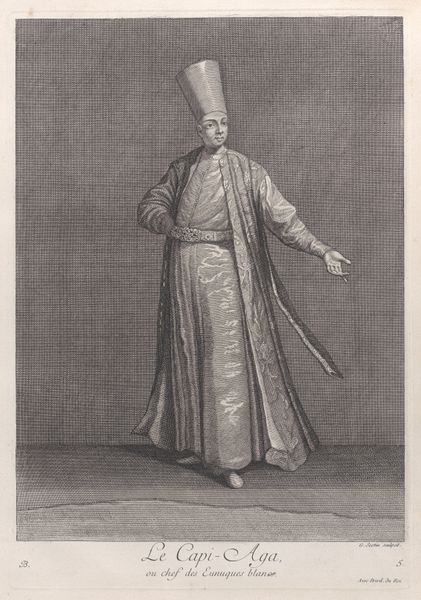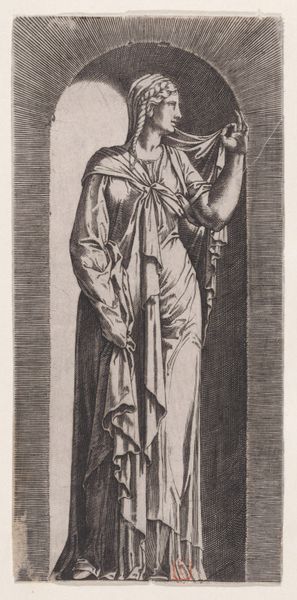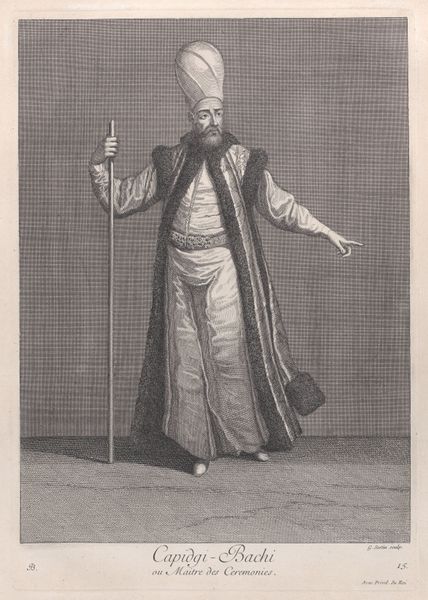
Le Cadi-leskier, Chef des Loix; il y en a un d'Europe et un d'Asie, plate 21 from "Recueil de cent estampes représentent differentes nations du Levant" 1714 - 1715
0:00
0:00
drawing, print, engraving
#
portrait
#
drawing
#
baroque
# print
#
portrait reference
#
men
#
portrait drawing
#
islamic-art
#
history-painting
#
engraving
Dimensions: Sheet: 16 7/16 × 11 15/16 in. (41.8 × 30.4 cm) Plate: 14 3/16 × 9 7/8 in. (36 × 25.1 cm)
Copyright: Public Domain
Curator: This engraving by Jean Baptiste Vanmour, created between 1714 and 1715, is titled "Le Cadi-leskier, Chef des Loix; il y en a un d'Europe et un d'Asie." It depicts a Cadi-leskier, a high-ranking judge in the Ottoman Empire. The print comes from a larger series of etchings representing different nations within the Levant. Editor: My first impression is how effectively the artist suggests textures with just lines. The billowing robe, the soft fur trim, the intricacies of the turban. It's almost tactile despite being a flat, monochrome image. Curator: Indeed. Vanmour, who worked as a court painter in Constantinople, had a keen eye for capturing the nuances of Ottoman dignitaries. This print, while seemingly a straightforward depiction, served a critical function: to familiarize European audiences with important figures and customs of the Ottoman Empire. It played into the existing European fascination with the Orient. Editor: And it's clearly idealized, isn’t it? Look at the composed stance, the contemplative hand gesture, even the serene expression. He is presented as learned and dignified, quite a contrast to the common European perception of the "exotic" Orient. Curator: Precisely. It speaks to the politics of representation at the time. While aimed at informing the European public, the artist likely shaped the portrayal to project a sense of authority and legitimacy, potentially serving specific diplomatic or political agendas. It's crucial to consider how European powers engaged with the Ottoman Empire and how visual imagery helped negotiate this relationship. Editor: The controlled composition and the emphasis on detail seem to uphold a kind of… visual decorum. It speaks volumes about the artistic strategies at play and reminds me that the value in artworks such as these goes far beyond aesthetics, providing commentary of culture in both its creation and reception. Curator: A necessary reminder when exploring the artwork; an object lesson in historical awareness.
Comments
No comments
Be the first to comment and join the conversation on the ultimate creative platform.
